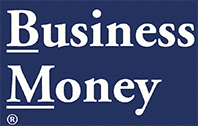Wages and jobs: the china shop before the bull is unleashed
The ONS has released employment and wage data covering the year to December-February: UK labour market: April 2025 – Office for National Statistics
Sarah Coles, head of personal finance, Hargreaves Lansdown: “This a snapshot taken in the china shop before the tariff bull was let loose. The jobs market was in decent shape, with steady wage growth and a rising employment rate. However, there were some early signs of shakiness as vacancies fell for a 33rd consecutive quarter, and finally dropped below their pre-pandemic levels.
On the plus side, we’re still seeing wages rise, and they’re still well ahead of inflation, so workers will be feeling slightly better off with each passing month. The most recent HL Savings & Resilience Barometer shows the average household now has £196 left at the end of the month, which is why people are able to put aside 5.5% of their income for the future.
There were some signs of resilience in the jobs market. The inactivity rate was down over the quarter, the unemployment rate steady and the employment rate has risen. However, things looked less positive when it came to vacancies. The looming hike in employers’ taxes in April is very likely to have persuaded employers to hold back on hiring. This is the simplest lever for businesses to pull when they want to slow things down. It’s far cheaper and damaging than letting people go, so may be a sign of things to come. Business investment figures don’t inspire a great deal of hope, down 1.9% at the end of last year.
What next?
The Office for Budget Responsibility expects wage rises to slow from here, so we can’t take the extra space in our budgets for granted. The rise in employers’ National Insurance this month means the cost of employing someone has increased, and over the coming years, employers are expected to claw this cost back through smaller wage rises.
Meanwhile, the jury is still out on inflation, but if the pause in tariffs ends with a hike, there’s a chance that businesses will pass the pain onto consumers, and inflation could become a threat again. Equally, there’s a chance it could persuade businesses to cut prices to compete harder, or that cheaper goods may be dumped in the UK, so inflation isn’t nailed on. However, if it comes, it’s going to bring tougher times for UK shoppers.

The outlook for jobs also threatens weakness. The OBR expects the unemployment rate to rise this year from 4.3% to 4.5%, so despite the fact that the number of employed people is also expected to increase, the growing population means there’s still a real risk of more people being out of work too. The impact of looming tariffs remains to be seen, but the concern is that it triggers a global slowdown. This, in turn, would mean a worrying time ahead for jobs. Even the threat of a slowdown could be enough to persuade businesses to rethink their growth plans, and cut back. We’re already seeing business investment fall, and this could be an increasingly significant trend if the economy takes a turn for the worse.
It means everyone should consider what they would do if they had a nasty surprise at work. Your greatest protection is often your emergency savings safety net, so we should all be working towards building enough cash to cover 3-6 months’ worth of essential spending in an easy access account. The good news is that the HL Savings & Resilience Barometer shows savings have been increasing over the past six months. However, a third of people are still falling short, so if your wages have risen a little more than your spending, now is the time to consider putting more aside for the future, just in case.”

